Nikkor 50mm f/1.2 AI-s
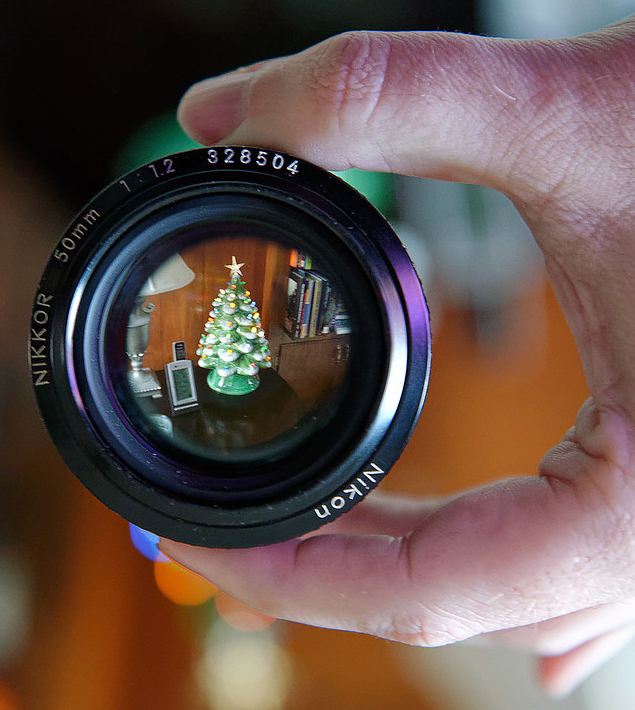
Introduction
When it comes to portrait lenses this is the benchmark lens. The standard bearer. The idol.
It is for good reason that this lens is beloved, it works great. How loved is it? The same lens, manual focus and all, is still in production today, unchanged since 1981.
That's right, modern brick-and-mortar stores still carry this lens, made brand new, in exactly the same setup as the early 1980s: why mess it?
The lens is not a panacea, it isn't great wide open, but it works great!
Specifications
The lens is setup with 7 elements in 6 groups.
Maximum Aperture: f/1.2
Minimum Aperture: f/16
The diaphragm is 9-bladed, producing outstanding, creamy bokeh.
The lens is strictly manual focus. My understanding is there is no room at the rear of the lens, with the diameter of the rear element, to fit the CPU connections to include a chip or to have auto-focus even if Nikon wanted to do so. This information may also limit you down the line, should you want to try to install an aftermarket chip onto your lens.
Construction
Made out of metal this lens has a solid, though clearly vintage look and feel to it. It feels great to operate.
It has the metal focus ring with the scalloped edges how I dream all lenses were made. A rubber grip will get loose after years of hard use, it can get gummy from heat and humidity, too. But a solid metal focusing ring is never impacted by any of these things and always feels great.
Performance
I will start with the bad news first: at f/1.2 things are not as sharp as some other lenses wide open. There is sort of a tiny bit of center softness that is unique to this lens and it gets less sharp as you move out to the corners. It produces a look that lets someone in know take one look at a photo at f/1.2 and know it came from one of these lenses.
So the bad news isn't all bad, even the softness is desired and lovely, especially for portraits. The softness evens out the skin of a subject without giving a glowing veil that an inferior lens may deliver.
As you stop down to f/1.4 or f/2 or f/2.8 things are VERY sharp. At f/1.4 this lens is sharper than any of the other 50mm f/1.4 lenses. At f/2 it is still sharper than any of them. Not until f/2.8 does the pack sort of even out.
Although contrast is high as sharpness increases (and is still good wide open), colors are certainly accurate but not amazing. The lens feels "vintage" in this department.
Alternatives
The sea of 50mm primes is gigantic. From other Nikkors at f/1.4 and up, to lowly Pentax, to high-end Ziess creations that are WOW, to home-made f/1.0 creations, picking a prime here is daunting.
One thing to consider: Nikon has never made a lens that is faster than f/1.2 and the only other similar thing you can find from Nikon is the 55mm f/1.2 lens. There is no auto-focus or chipped Nikon, so your options, from Nikon, at f/1.2 are very limited. Step down to f/1.4 and things are too many to count. But if you are looking for the super tight DoF of f/1.2 and you want quality Nikkor glass, this is your best bet.
Examples
Following are some sample photos to demonstrate the power of this type of lens and some general uses which will likely yield good results. If you shoot things like these, then this lens may be a good one to think about adding to your camera bag.

Above you see the 50mm f/1.2 doing its thing as a portrait lens, rending the subject in sort of a beautiful light at f/1.2 even if the light was just meh that day.
Below is a shot with a wee bit more softness. I could have corrected it in Photoshop but I felt the look suited the subject of the cat.
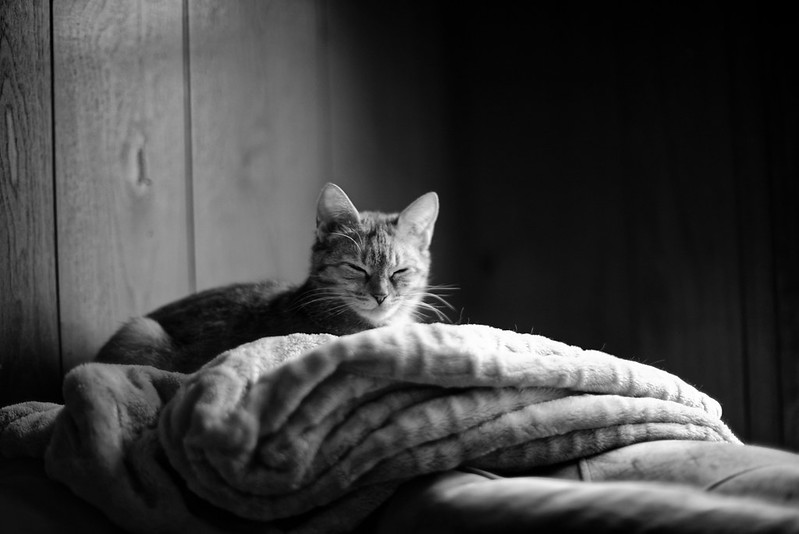
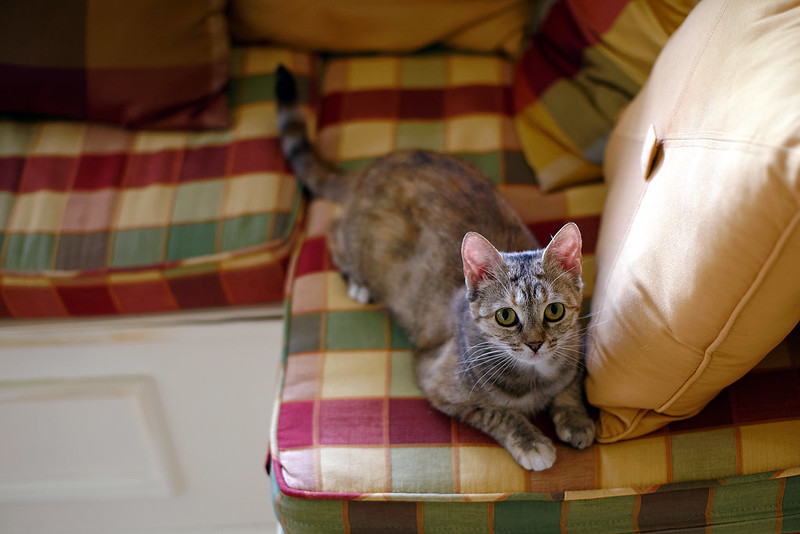
Above's cat photo is much, much sharper. Why? I shot at f/2 instead of wide open. The DoF is still tight, there is a blur behind the cat's face, but the face is super sharp.
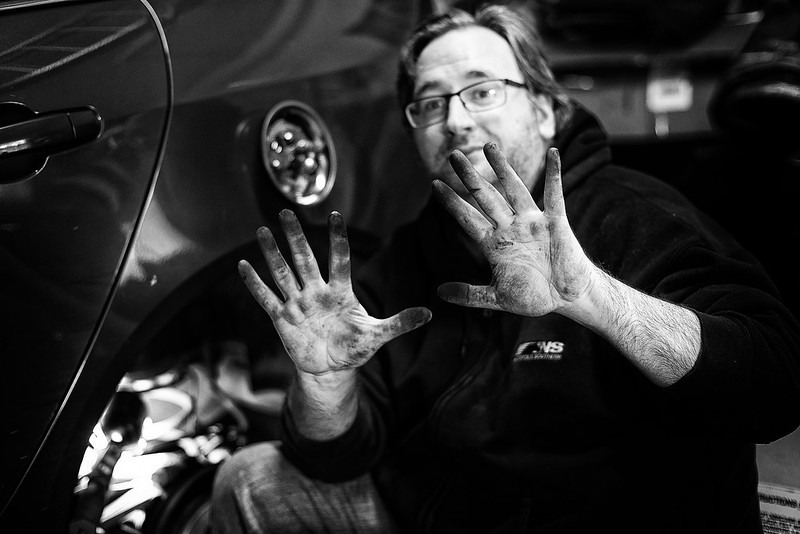
Above is another take on a portrait photo. Here we can see some of the nice contrast available in black and white photography with this lens. Like the cat's face above, this shot was done at f/2.0 to maximized sharpness.
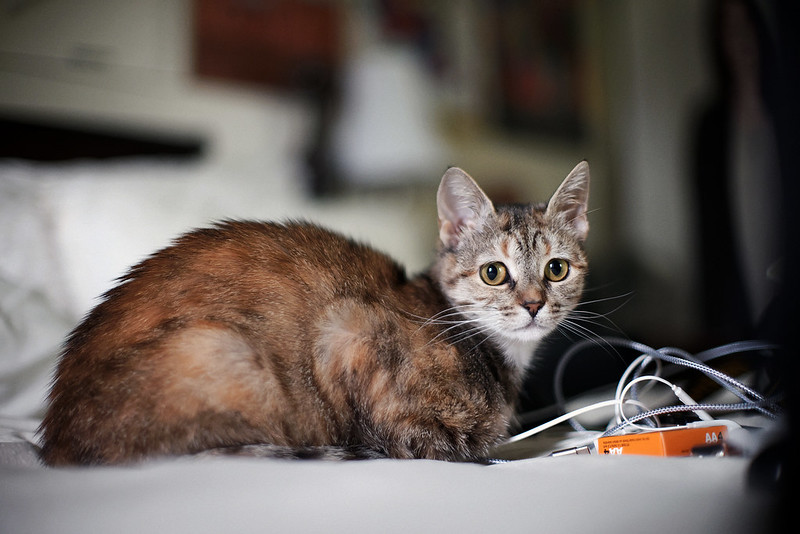
Above and below are the same shot but in color and BW. I wanted you to see the color, or really the lack of dramatic color along with the cool softness seen at f/1.2 in both shots. The contrast that this lens provides really shines in the black and white version.
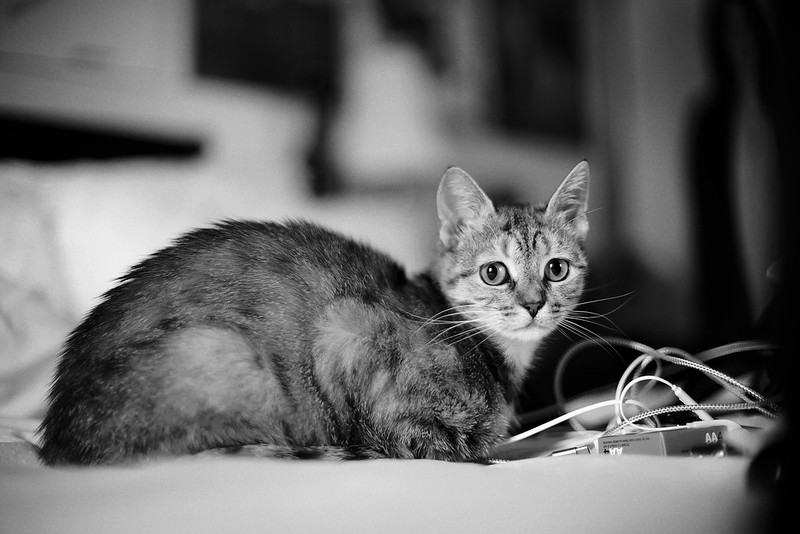
Speaking of black and white, look at the inky-depths you can get while still having latitude in the highlights as seen in the outdoor cat photo below.
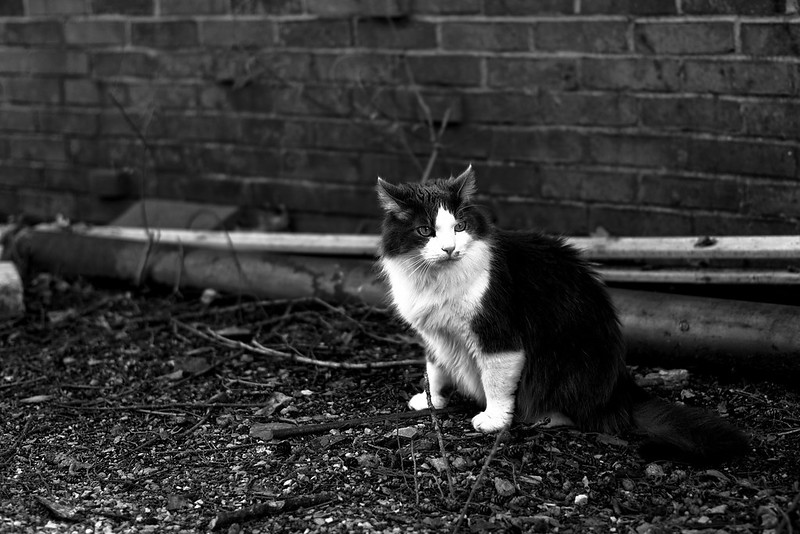

Above and below are Christmas portraits. The toy robot (Tom Servo) was shot at f/2.8 while the woman is f/1.4 - showing what the lens can do stopped down a little and then a little more.
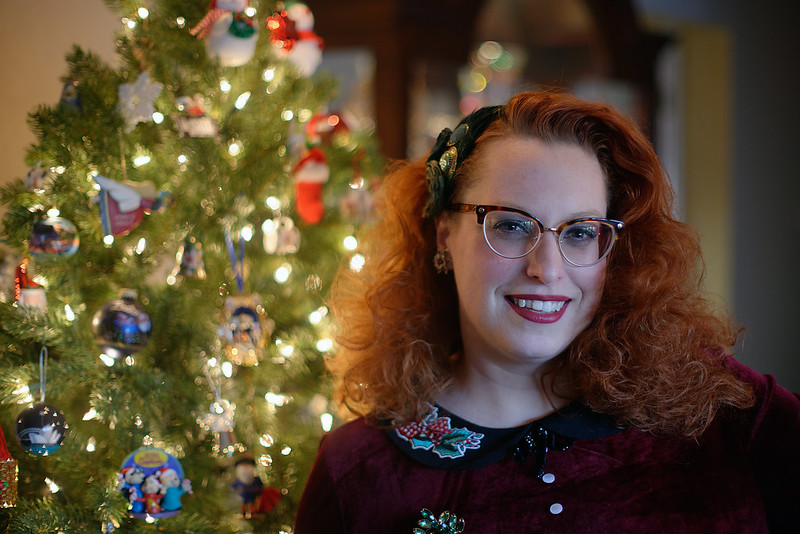
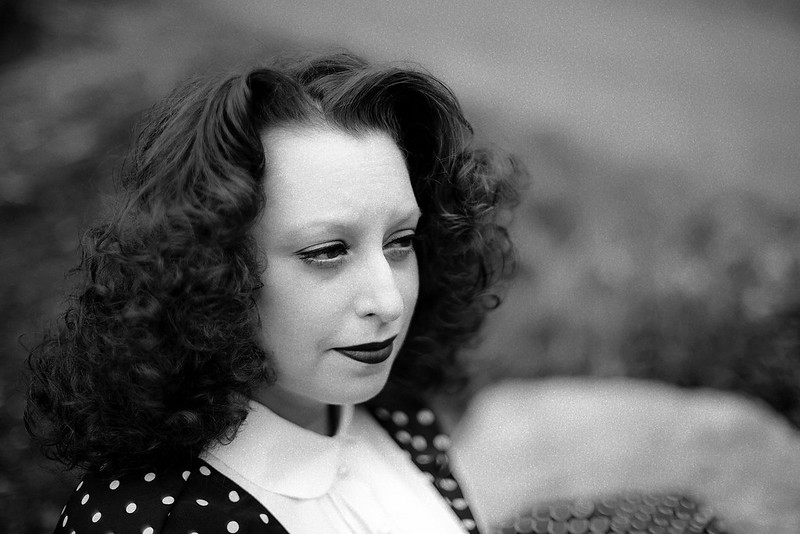
Finally, the above photo has that 50mm f/1.2 look to it with that you-know-it-isn't-sharp-but-where dreamy look that isn't "soft" but it isn't "sharp" - something pleasingly in between. That is what this lens is known for, and looks great in black in white with some film grain.
Check out more photos I have shot with this lens in my Flickr Album.